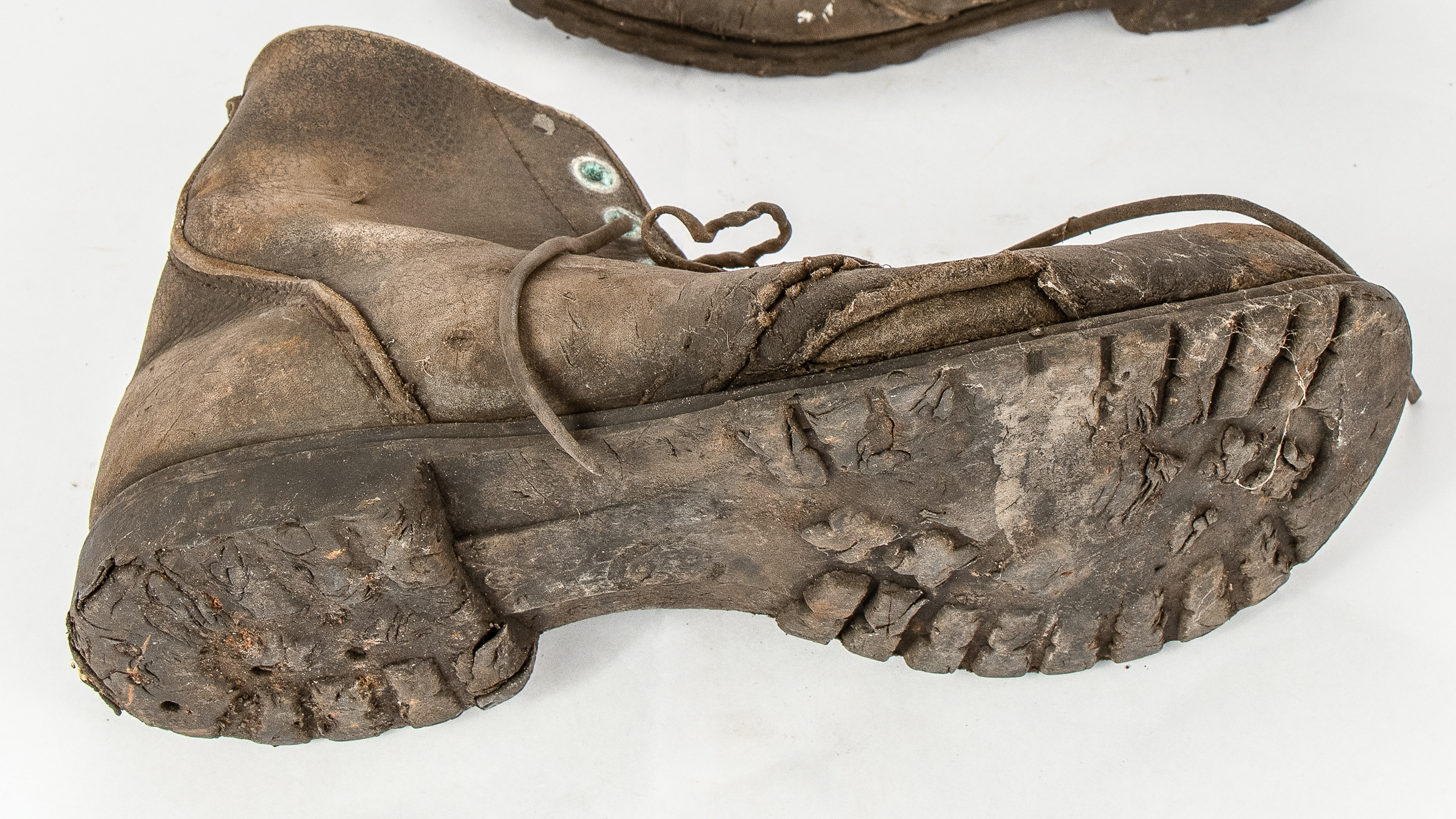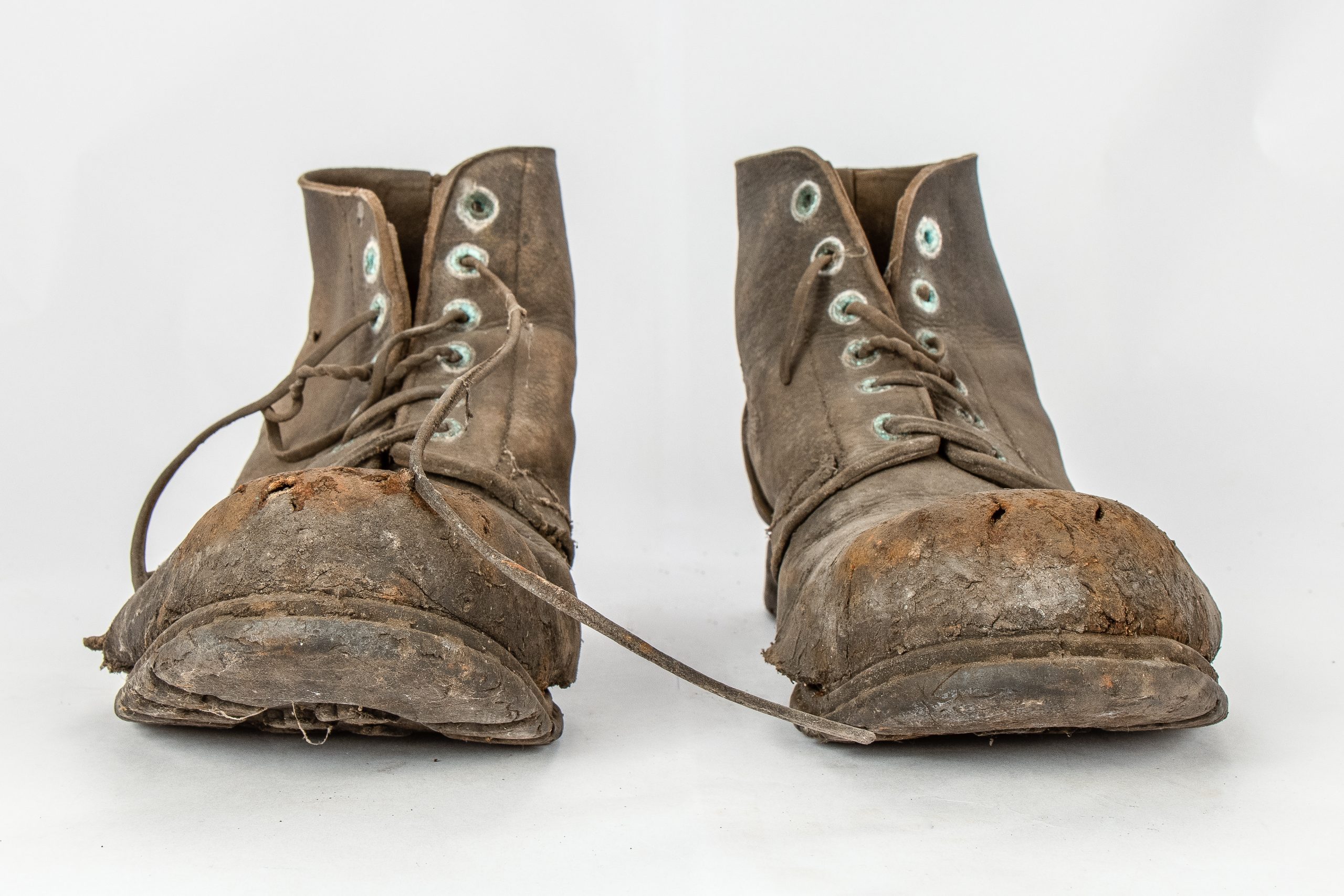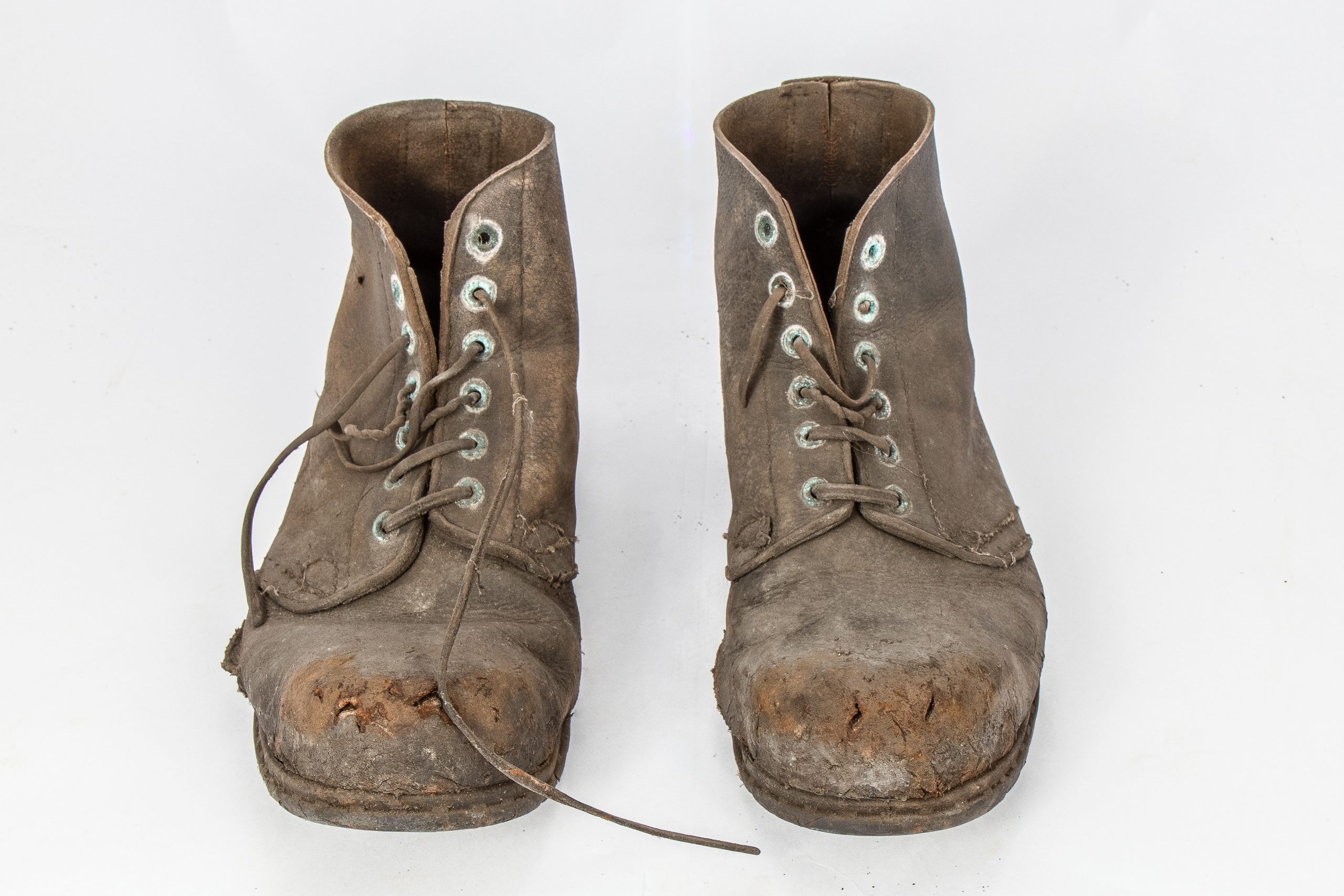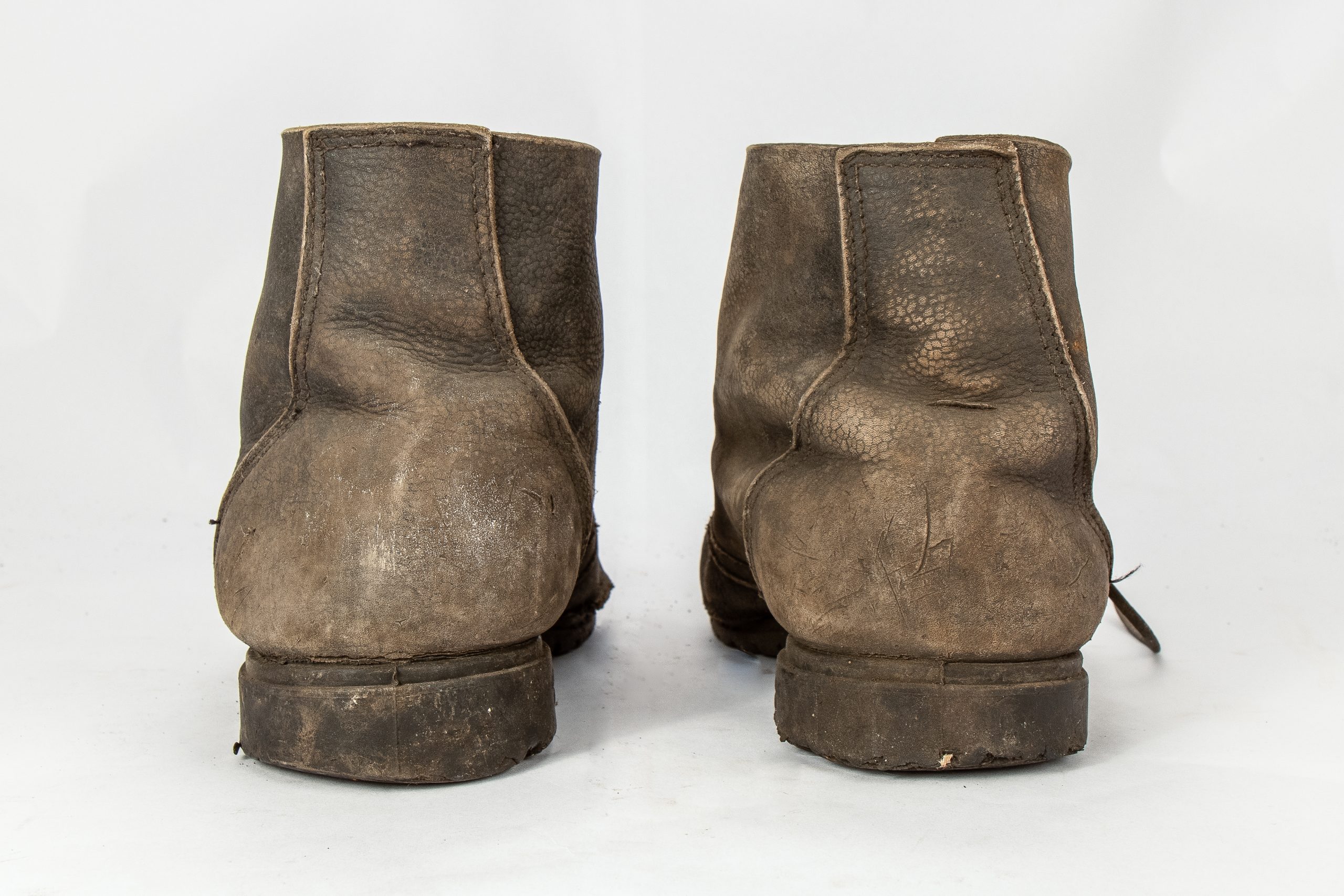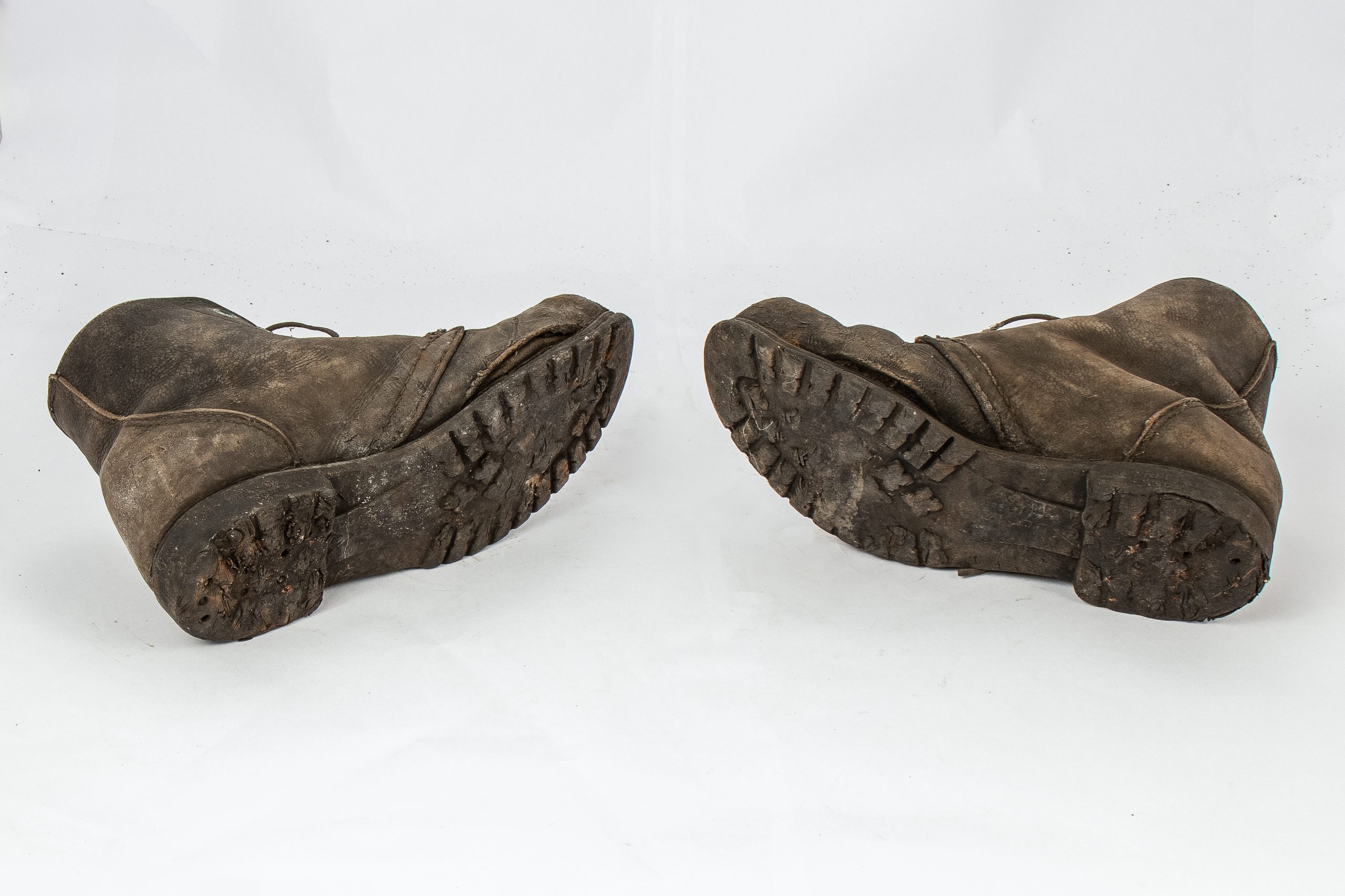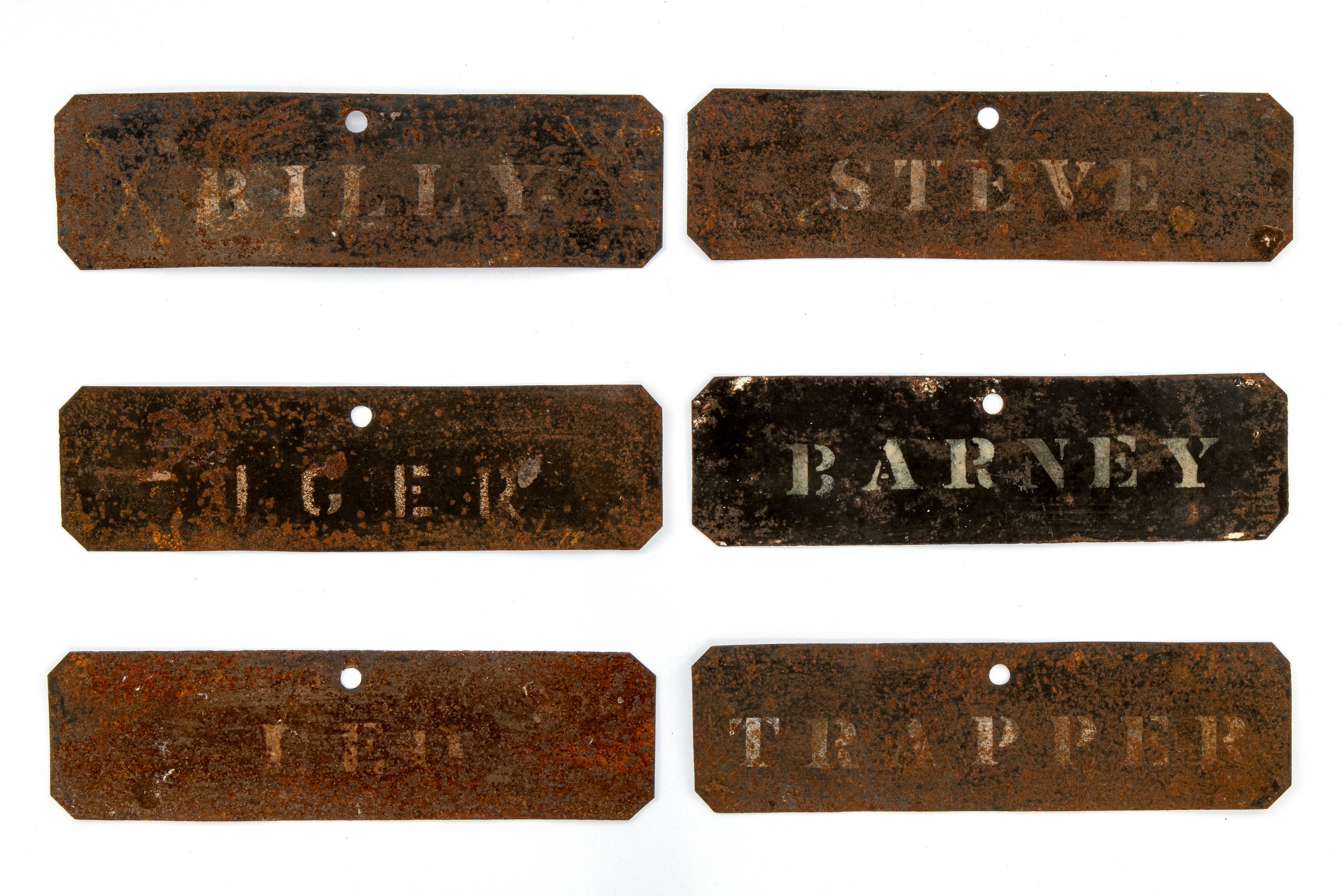Fit For Purpose
Miner’s Boots from the Stockton Borehole Colliery
Leather worn through at the toes, broken laces, and soles coming apart. These boots were worn to the bitter end and seemed to serve their wearer well. But were they fit for purpose?
Worn by a miner at the Stockton Borehole Colliery, at Teralba, Lake Macquarie, where coal was mined from 1901, boots like these were standard issue for miners from about the 1960s. With the ongoing risk of falling coal and rocks, working with heavy equipment, and the occasional disastrous roof and wall collapse, coal miners have been wearing increasingly effective safety gear since the mid-nineteenth century.
For decades, miner’s boots were basic – their soles were thin leather, but they did have hobnails and steel plates attached, to grip the rugged mine floors. At least these late-twentieth-century boots have hard moulded rubber soles with treads that gave the wearer a sturdier grip, but they were still not adequate for the conditions underground.
Imagine how miners feel, spending long shifts on their feet, usually in wet and muddy conditions. Robert Burton, a Teralba miner, remembered when he and his workmates needed to wade up to their chests in water to recover a pump that had stopped working: ‘… we stripped right down to our undies and we kept our boots on because you didn’t really know what was under there’. Later, they tipped all the water out of their boots, but they still squelched as they walked around.
High-tech safety boots are now available with Velcro and zips, waterproofing, ankle and arch support, and electric shock resistant properties. However, comfort is still not a priority. To this day, many underground coal miners continue to experience ongoing foot, back, and leg problems because of their work boots.


